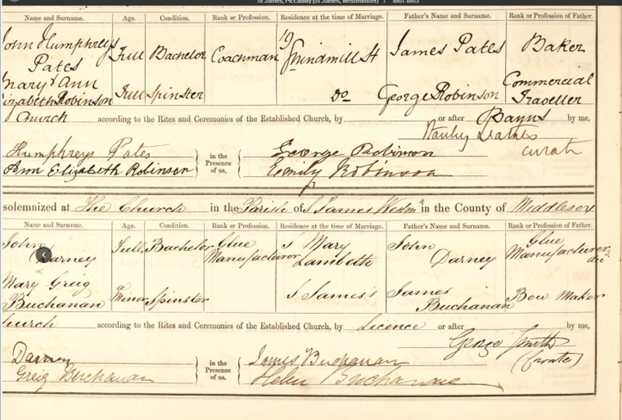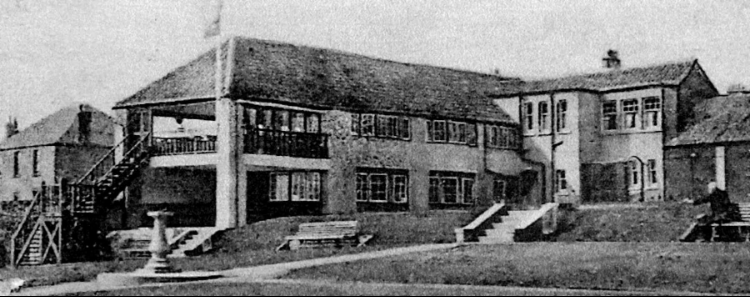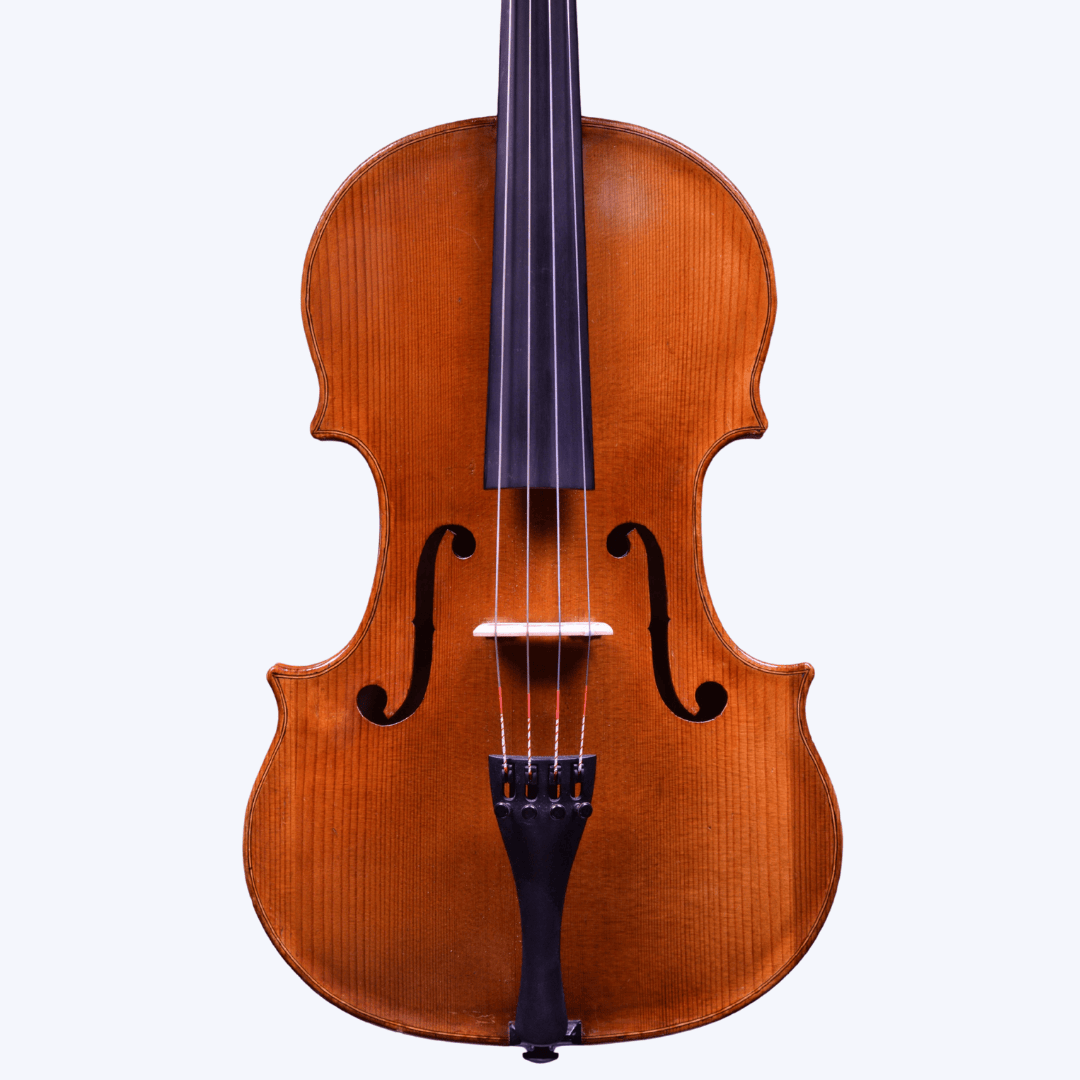We recently acquired a very interesting viola by Alexander Darney, made in Kinghorn in 1890. Darney is one of the very many Scottish makers whose work can be seen as somewhere on the line between amateur and professional. Having trained as a joiner in his youth, Darney's professional life took him into the murky world of glue manufacture but his woodworking skills are very much in evidence in the viola that we will examine in this article.
As is always the way, a quick delve into Darney’s life became a somewhat more involved project as the various characters were too fascinating to ignore! The analysis of the viola itself is towards the end of the article, should you wish to skip the biographical detail...
The Darney family
The Darney family story is centred around the Fife town of Kinghorn, a fishing town turned seaside resort on the north side of the Firth of Forth. Situated opposite Edinburgh, the town is in easy reach of the capital city, where makers such as Matthew and Thomas Hardie, David Stirrat, William Ferguson and John Blair had established a distinctive and successful school.
Alexander Darney was born in Kinghorn on the 12th of December 1822 and baptised in that town ten days later. He was the fifth of six children born to John and Margaret Darney (sometimes spelt Dairnie) of Kinghorn: three girls, followed by their three brothers. The family was of fairly high standing in this industrial town: John Darney had founded a business as a glue manufacturer in Kinghorn in 1818, operating out of a large site near the shore.
The Darney siblings
The six siblings were as follows:
- The eldest daughter, Helen, seems to have lived in Kinghorn all of her life and never married, just like her younger brother Alexander. She was born in 1809 and died in Kinghorn in 1877.
- The next daughter, Elizabeth, was born in 1811 and is often referred to as Betsy in official documents. She married John Whyte in Kinghorn aged 19 and moved to Bridge of Allan in Perthshire. In the 1851 census we find her running a Lodging House at 151 High Street and named as the head of the household, assisted by her younger sister Margaret and a maid. She had returned to Kinghorn by 1881 and lived with Alexander, leaving her fairly significant estate (£2328, 15s and 10d) to him when she died in 1899.
- The third sister, Margaret, was born in 1814. She never married and lived in Bridge of Allan with Elizabeth. The two are still found there in the 1871 census but her place of death is given as Kinghorn when she passed away in 1876. We assume that the two sisters returned to Kinghorn at the same time, between 1871 and this date. Her three brothers and eldest sister were named as her executors.
- Henry, the first of the brothers, was born in 1818. He married and had four children. He also became the Provost of Kinghorn from 1897 until his death on the 21st of May 1899. The Kinghorn town hall retains several oil paintings that were gifted to the town by Henry Darney.
- Alexander was the fifth sibling, born in 1822.
- Finally, John, the youngest brother, was born in 1827 and found his way to London. He married Mary Greig Buchanan in Westminster on the 31st July 1862 and gave his profession as a glue manufacturer on the marriage certificate. Fascinatingly, the bride’s father was a famed maker of archery bows whose work is much prized today! I’m sure you can imagine my initial excitement when the profession of bow maker appeared on the marriage certificate pictured below...

Alexander Darney: a timeline
1851 Census: we find Alexander living at home (Westend No. 4) with his parents, eldest sister and younger brother. He gives his profession as a glue maker and joiner. John Darney passed away in 1855, leaving Alexander and his brother Henry to run the family business.
1861 Census: Alexander was still living at home (his widowed mother is now named as the head of household) and his younger brother John has left home. Alexander’s occupation is now a Master Glue manufacturer, a reference to the fact that he and his brother Henry now run the firm.
1871 Census: we find Alexander living with his sister Helen and a servant. Their mother had died in 1866. The addition of a servant to the household suggests an improvement in living circumstance.
1881 Census: Helen had passed away in 1877 but Alexander is now living with his sister Elizabeth and a servant.
1891 Census: Darney is still living with Elizabeth (Betsey) and a maid.
1901 Census: The final census before his death shows Alexander still living with one servant. His sister Elizabeth had died in 1899, leaving him living without a sibling or parent for the first time. His brother Henry also died in the same year, meaning that Alexander was now in sole charge of the glue works. This appears to have been too onerous for the now 76 year old Alexander: the business was sold and moved to the outskirts of Edinburgh in 1903.
Darney's younger brother John died in 1905, leaving Alexander as the last of his siblings until his death the next year. The value of Alexander’s estate was £3965, 5s and 10d: roughly £660,000 today. Alexander Darney was buried in Kinghorn Cemetery. His gravestone gives mention of both parents, his sisters Margaret, Helen and Elizabeth, his brother Henry and his wife, as well as their daughter and grandchild.
Once the business relocated to Midlothian, the disused glue works were used to station some soldiers of the Black Watch during the First World War, before being taken over by the Town Council after the war. Some of the buildings were demolished in 1927, leaving the most attractive to be redeveloped into Tea Gardens. These were a key venue as Kinghorn made the transition into a very popular seaside resort: a far cry from the foul smells that had fairly recently emanated from that site! The picture below shows the Tea Rooms in the late 1920s, gratefully reproduced from the excellent Kinghorn Heritage Trail.

Analysis of the instrument
The instrument is Darney’s copy of a cut down Brothers Amati viola. Tantalisingly, we know that the ‘Primrose’ Antonio and Girolamo viola of circa 1600 was living in Scotland just after the viola was made: it was sold by Andrew Smillie of Glasgow to James Primrose, violinist father of the great viola soloist William Primrose. Much time has been spent trying to work out where the viola was prior to its documented time in Glasgow: frustratingly we don’t yet know whether there was a chance that Darney knew the instrument personally before it was sold to James Primrose.
Close comparison of the model suggests that Darney was quite familiar with the instrument, whether from pictures or from a more personal connection.

.png)
Like many Scottish instruments of the period, the viola combines imported maple with local pine. The front is of particular interest, being made of two pieces of local pine with two smaller wings at the edges of the lower bouts. In addition to being a smaller piece than necessary, the grain of the pine varies widely in width.
Given that Darney was a fairly wealthy man by this stage in his life, we can assume that the choice of wood was more likely out of sentiment than necessity: for example, a tree from his own grounds. The two piece maple back is of a much higher quality, confirming our suspicion that saving money was not at the heart of the wood choices.
The scroll is somewhat massive in relation to the viola, much like the instrument we believe Darney was copying. The original of course has a larger scroll than its cut down body!
.png)
The fluting of the scroll is quite deep and there is an interesting pronounced diagonal chamfer on the pegbox.
.png)
The instrument is not labelled but instead signed in pen. Charmingly, it's possible to see where Darney scribed guide lines on the back before carefully signing his work!
(2).png)
.png)
A further charming feature on the the viola is a small infill of mastic in the lower treble corner on the front: here Darney is neatly rectifying where a piece of the very wide grained pine ripped out when cutting the purfling channel.
.png)
Other instruments:
An 1891 violin with oversized length of back sold at auction in 2001. This date suggests that Darney was able to devote more time to his craft once he came close to retiral: he was 67 when he made our viola. We would be delighted to hear of other instruments by Alexander Darney so that we can continue to piece together our understanding of this fascinating Scottish luthier!